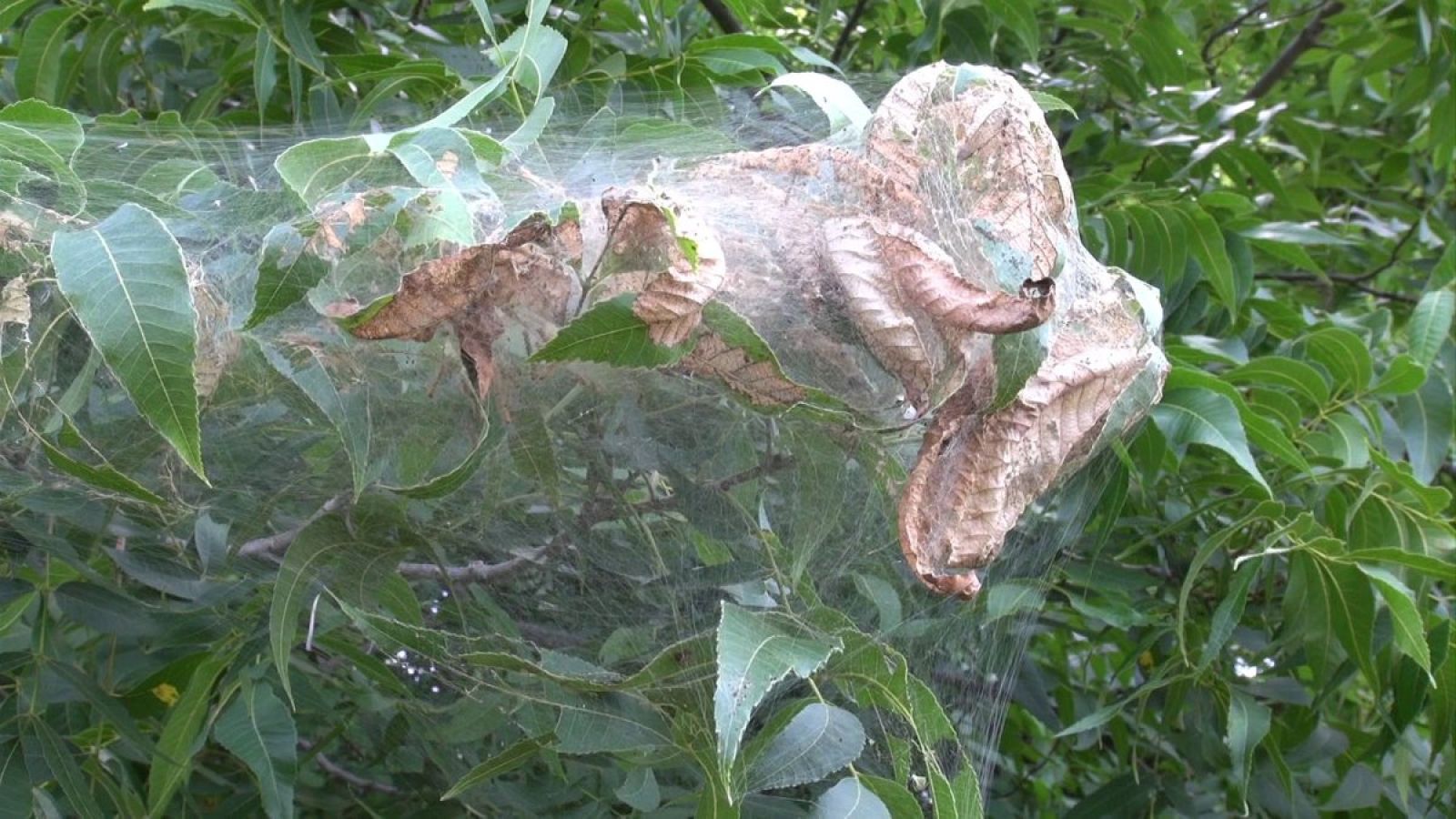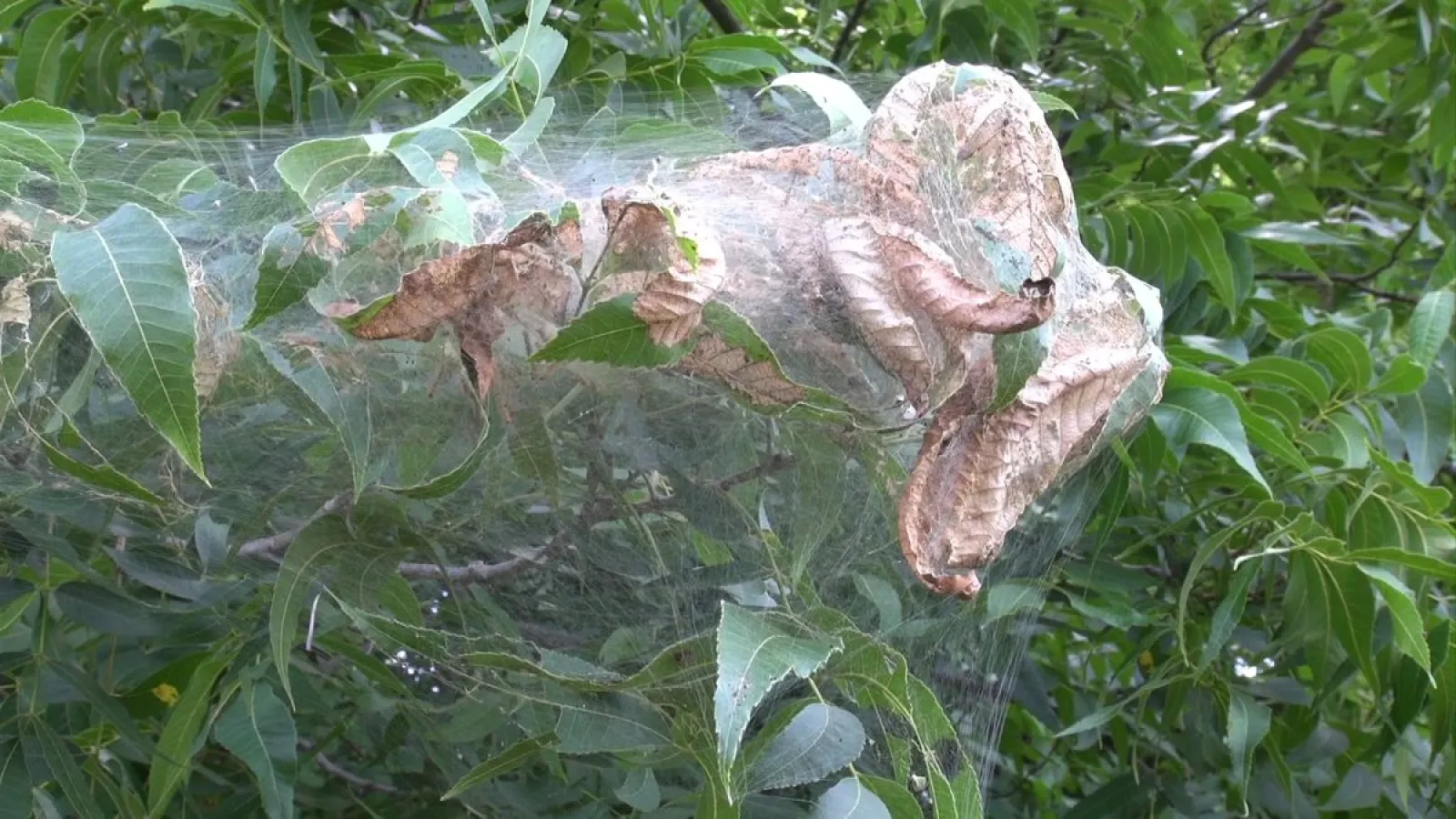So you've been doing a great job of keeping your yard looking healthy and flourishing for spring. But you begin to notice thick webs forming in your trees and bushes. It's an almost unusual sight, and you're not sure what could be causing it. There's a good chance that webworms are causing this problem. Take a look around your yard, and near these webbed nests, for some hairy caterpillars.

What Do Webworms Look Like?
The larvae of the webworms are fully covered in white hair, that grow out of black and orange warts. Different worms have slightly different colors and marking, but most are usually a tint of green with a stripe along the back and side.
The brown pupa are cocooned and concealed in the ground, or in cracks or crevices until they emerge as adults.
As they mature, they turn into moths. Most adults are white, but some may have different variations of marking on them, such as spots. The wingspan of the moths is around 32 mm.
What Are Webworms?
Webworms are the caterpillar form of small white moths. They eat the leaves of trees, and build nests in the branches. The nests can be fairly visible, as they often have a dark tint to them. It may look like the worms are taking over the tree and killing it, but are they really doing any harm?
Are They Dangerous?
The short answer is no. Though it may look at though the webworms are overwhelming the trees and vegetation, the most that they are doing is defoliating them. Simply put, the most harm that these creatures are doing is eating lives off of your trees and shrubs to survive and reproduce. That being said, the most organic and humane approach to dealing with them is to leave them alone. If something is not causing you harm or affecting you in any way, it is best to just let it do it's thing.
How Do I Get Rid of Them?
If you're bothered by the eyesore of the nasty webs being built in your trees, or if they happen to have found, and begun to eat, any fruit or vegetables you are growing in your yard, then it is time to get rid of them.
There are many ways to approach combatting a webworm problem. The simplest, and most natural way is to just cut open their webs and let nature take its course. The web nests shelter and protect the worms for environmental threats and predators, so by exposing the worms you will be threatening their existence. Weather will wash them away, and birds will make a tasty meal out of them.
If you don't trust nature to solve the problem, then you can take matters into your own hands. Simply take the branches that the nests are built upon and submerge them in soapy water. If you don't want to touch them, or even get close to them, you can wrap their webs around a larger branch, stick, or broom, and then submerge them in soapy water to kill them.
We do not recommend using any pesticides because they can be poisonous and detrimental to other living creatures, but if the problem is extremely large scale you may need to use a registered insecticide.
A commonly used insecticide for webworm infestations is Bacillus thuringiensis or âBtâ. It is very effective, and generally safe if used properly. If you do use an insecticide please read the instructions and warning labels very carefully, and abide by them. Do not contaminate any other vegetation, livelihood, or bodies of water. If you are uncomfortable with dealing with this problem yourself, contact your local arborist and have them handle it.
For more information about other pest problems including bug or wildlife infestations, contact a pest control professional. Breda Pest Management has been servicing the Southeast since 1975. We use the latest and greatest technology to make sure our services are effective and time efficient. To schedule a service, or request a free consultation contact us, or call us at 770-466-6700.




